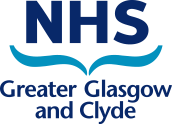Prescribing in Kidney Disease (August 2014)
Information below is specific to the use of medicines in the adult setting.
Acute Kidney Injury (AKI) and Prescribing
AKI is common in hospitalised patients with intercurrent illness, multiple co-morbidities and polypharmacy. It is defined as a sudden and sustained decline in Glomerular Filtration Rate (GFR) leading to an accumulation of urea and other chemicals, with or without, a drop in urine output. It is categorised in 3 stages from I (mild) to III (severe), as described in the table below.
Early recognition and prompt management of AKI is important, as even a small rise in creatinine during an acute admission has been associated with prolonged hospital stay, increased morbidity and an increased likelihood of death. For information on the management of AKI see the Therapeutics Handbook and for prescribing advice in AKI see the box below.
Table 1 – Stages of AKI
Definition of AKI Stages
Stage I
Cr >150 – 200% from baseline or
Acute increase of Cr>25 micromol/L/48 hours or
Urine output < 0.5 ml/kg/hour for > 6 hours
Stage II
Cr > 200 - 300% from baseline or
Urine output < 0.5 ml/kg/hour > 12 hours
Stage III
Cr > 300% baseline or
Cr > 350 micromol/L or
Urine output < 0.3 ml/kg/hour for 24 hours or
Anuric for 12 hours or
Requires renal replacement therapy, irrespective of Cr
Key Messages for Prescribing in AKI
- Seek specialist advice if prescribing for a patient on dialysis.
- Avoid nephrotoxic drugs where possible (e.g. gentamicin, vancomycin and some antifungals, antivirals, IV contrast media and cytotoxics).
- Stop medicines which can reduce renal perfusion (e.g. ACE Inhibitors, angiotensin II antagonists and NSAIDs) or exacerbate extracellular fluid volume depletion (e.g. diuretics).
- Do NOT place too much value on a single creatinine measurement. If the serum creatinine is rising rapidly and/or the patient is not passing urine then the GFR is likely to be zero.
- Formulae used to calculate estimated Glomerular Filtration Rate (eGFR) or Creatinine Clearance (CrCl) are only valid when the serum creatinine is stable. Use of such formulae for prescribing in AKI can lead to drug toxicity (and potentially exacerbate AKI).
- Consider re-introducing medicines once the AKI has resolved (it may be appropriate to leave this for some weeks until renal function has completely stabilised).
- Patients re-starting (or starting) ACE Inhibitors, angiotensin II antagonists and NSAIDs should be educated on the need to stop therapy during periods of illness associated with dehydration e.g. diarrhoea.
Chronic Kidney Disease (CKD) and Prescribing
eGFR is a useful tool to detect chronic kidney disease (CKD) but it can also be used to guide drug dosing in some patients with CKD (see key messages box below).
Although renal function is increasingly reported as eGFR, published information on the effects of renal impairment on drug elimination is usually stated in terms of CrCl and this can lead to confusion. The key messages below provide guidance on how to prescribe for patients with CKD.
Key Messages for Prescribing in CKD
- Seek specialist advice if prescribing for a patient on dialysis.
- Avoid nephrotoxic drugs where possible (e.g. gentamicin, vancomycin and some antifungals, antivirals, IV contrast media and cytotoxics).
- In elderly patients the creatinine can look ‘normal’ but due to reduced muscle mass, assume at least mild renal impairment.
- In practice, eGFR can be considered interchangeable with CrCl if the patient is of normal build and height i.e. the reported eGFR can be used to guide dosing even if the published information refers to CrCl. The exceptions are:
- Patients at both extremes of body weight
- Patients prescribed potentially toxic drugs with a small safety margin. (The BNF and/or local guidelines should be consulted for individual drugs. Examples include gentamicin, vancomycin and digoxin).
In these patient groups, CrCl should be used to adjust drug doses; the ‘Cockcroft Gault’ equation can be used to estimate CrCl.
REMEMBER
Prescribing in CKD:
Use CrCl in preference to eGFR for
1. drugs with a small safety margin
2. patients at extremes of body weight
Prescribing in AKI:
Use eGFR or CrCl with extreme caution and seek advice from pharmacy if necessary.
